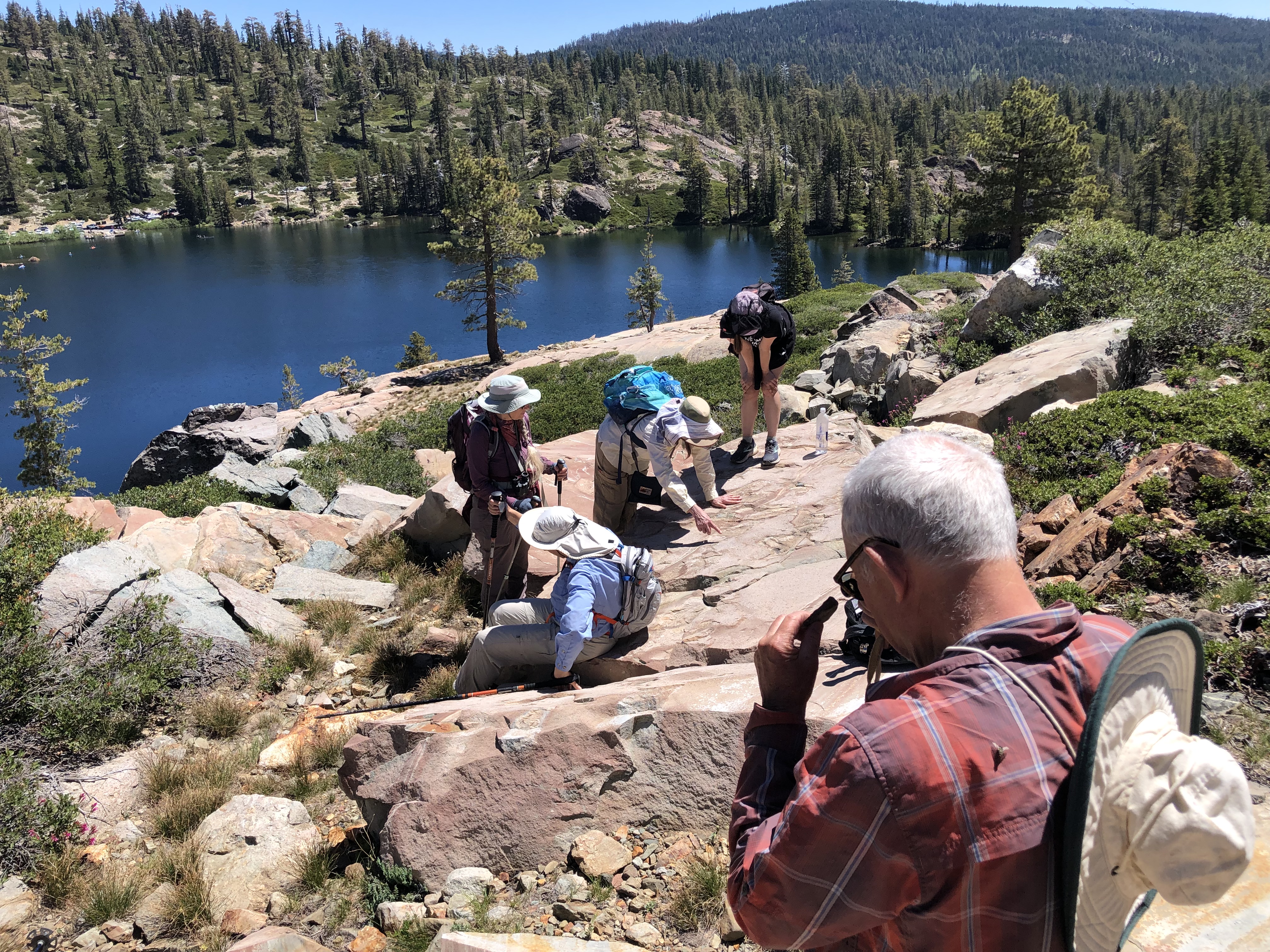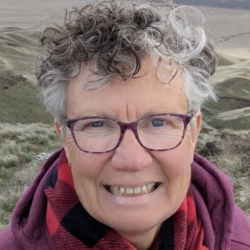Field Geology of the Haskell Peak—Sierra Buttes Area, Northern Sierra Nevada
Dates: July 13-18, 2025
Instructor: Betsy Mathieson
Fee: $560.00 + meals and accommodations fees
Term: Summer 2025
Workshop Description
Join us to explore the geologic history, formations, and landforms of the crest of the Sierra Nevada near the Field Campus. In a series of hiking-intensive day trips and evening lectures, students will learn the basics of geology, travel back in time from Pleistocene glacial deposits through Tertiary volcanic and sedimentary rocks to Paleozoic metamorphic rocks, and learn about the rich history and impacts of gold mining in this beautiful region. The course will require moderately strenuous hiking at high elevations on potentially hot days as we learn about the ground beneath our feet. Students with any level of geologic knowledge – or none – are welcome. Bring your observational skills and your camera! (Students will drive their own vehicles and carpool from the Field Campus to field sites and trailheads. If you have a choice of vehicles, bring a high-clearance one.)


Instructor Bio
Betsy Mathieson
Betsy Mathieson first visited the Field Campus as an undergraduate student, learning the basics of geologic field mapping in the mountains we’ll be exploring during this course. She subsequently earned an A.B. in Geological Sciences from Harvard University and an M.S. in Engineering Geology from Stanford University. As an engineering geologist based in the San Francisco Bay Area, she worked around the U.S. and served as a member of the California Seismic Safety Commission. She currently is the geologist member of the California Board for Professional Engineers, Land Surveyors, and Geologists. Betsy and her geologist husband Scott have enjoyed hiking over rock outcrops and glacial moraines in the Field Campus area for many summers.
Workshop Details
Workshop Schedule
Planned Field Site Visits
Our itinerary is designed to showcase this spectacular region’s geology, working generally from the youngest formations to the oldest. We’ll begin with glacial moraines and cirques, continue into ash-fall tuffs and flows that filled a major paleovalley crossing the boundary between the Basin-and-Range and Sierra Nevada geomorphic provinces, explore the underlying granitic rocks, and work our way through a thick sequence of pillow basalts, breccias, and intrusives that formed in a volcanic arc environment and that were metamorphosed before and again during emplacement of the granitic rocks. Along the way, we’ll learn about the geologic origins of the region’s gold deposits and the placer, hydraulic, and hard-rock mining operations conducted by the first non-indigenous settlers in the region. This itinerary is tentative, pending melting of snow and slowing of creek discharge to permit access (but it worked in 2023 after a winter of historically deep snow).
Monday: Glacial overview – Gold Lake Road, Lower Sardine Lake, Frazier Falls, glacial features, and Young America Mine view. Drive and moderate/easy hikes at 5700 and 6200 feet elevation with one stream crossing (across and back). Roadside stops to examine cuts through glacial deposits.
Tuesday: Mohawk Valley and Yuba Pass – Fine-grained glacial lake deposits, and Tertiary-aged volcanic tuffs and lahars. Long drive, moderately easy hike at 4400 feet elevation, picnic at Plumas-Eureka State Park, and spectacular roadcut exposures.
Wednesday: Flank of Haskell Peak, Mills Peak Lookout, and roadside stops – Tertiary-aged tuffs and basalt, Cretaceous-aged tonalite, Jurassic-aged Haypress Creek Granodiorite, Permian-aged greenstone, views down Mohawk Fault escarpment and into Lakes Basin, and Carboniferous-aged folded ribbon chert. Drive and moderately strenuous hike at 7600 to 7800 feet elevation on and off trail, easy hike at 7200 feet elevation, and short highway roadcut walks.
Thursday: Upper Salmon Lake – Devonian-aged pillow lavas and volcaniclastic sediments, and glacial features. Moderately strenuous hike and scrambling at 6500 to 7000 feet elevation, on and off trail. Possible tour of Kentucky Mine Museum and stamp mill near Sierra City.
Friday: Deer Lake trail – Devonian-aged pyroclastic flows, intrusives, and columnar-jointed sills alternating with rare chert peperite. Moderately strenuous hike on and off Pacific Crest Trail, with stream crossings, at 6100 to 6700 foot elevation. Optional ice cream at Bassetts Station afterward!
Workshop Supplies List
Recommended/Optional Field Gear
Recommended: hiking poles, safety vest (for roadcut stops), 10x hand lens (geologists’ magnifying glass) on a lanyard.
Optional: binoculars, real camera, notebook and pencils.
Lodging and Camping Supplies
Camping gear if you are staying on campus:
- tent and sleeping pad (unless you are staying in our tent with a cot provided)
- warm sleeping bag
- pillow, toiletries, and towel
- flashlight and lantern
- alarm clock
Field gear for everyone:
- day pack
- sunscreen
- insect repellant
- water bottles
- plastic containers for packed lunches
- sense of humor
You might also want to bring:
- camera
- binoculars
- hand lens
- camp chair
Clothing:
The weather in the Sierra Nevada can vary greatly, even in a single day. Be prepared for chilly temperatures at night, even below freezing early in the summer, and hot temperatures in the afternoon, even at high elevations. Rain is a possibility any time, whether forecast or not. Variable weather clothing that can be layered is best: long pants and a long-sleeved shirt, warm sweater and jacket, t-shirt and shorts or skirt, sturdy shoes or hiking boots, sun hat, rain gear, and a warm hat or gloves for cold weather and/or night activities. And, if you come later in the season, bring your swimsuit for afternoon dips in the lakes!